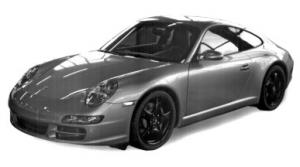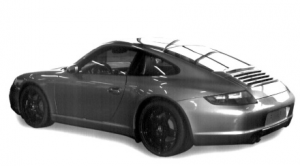In a recently decided appeal to the General Court, Porsche lost their EU design right to the classic Porsche motor 911. See Porsche AG v. AUTEC AG, 20190606 – T-210_18. Porsche filed its Community design (OJ 2002 L 3, p. 1) with the European Intellectual Property Office on 2 July 2004 for passenger cars. The Community design applied for is represented in the photographs above and below (“the Community design”): “Earlier design with the 997 series of Porsche motor 911).”
Autec AG, a German toy car producer, filed an application with EUIPO for a declaration of invalidity of the contested design, claiming that the design lacked both novelty and individual character and thus was incapable of protection. In May of 2016, the Invalidity Division granted the application for a declaration of invalidity and annulled the contested design on the ground that it had no individual character. Porsche subsequently appealed the Cancellation Division’s decision to the General Court.
The issue on appeal was whether, from the point of view of the informed user and taking into account the degree of freedom of the design that may be granted to the designer of the design, the overall impression produced by the contested design differs from that produced by the earlier designs.
Porsche argued for a narrow construction of Registration No 6/2002. Specifically, Porsche argued that their CDR was valid because minor changes throughout the body of the 911 in addition to changes in the sizes and shapes of the door handles, headlights, rear lights, windows and mirrors, among others, gave the car a significantly broader impression than previous versions of the car. Additionally, they argued that the informed user was a sophisticated user – a person who is distinctly familiar with the product at issue, such that they would be aware of slight changes in newer models of the 911.
Meanwhile the European Intellectual Property Office (“EUIPO”) and Autec argued that the design of the 911 has not changed since 1963, and that the advertisements focused on the similarities of the newer models rather than the differences in appearance of the car. Further, the millimeter extensions to the body and wheelbase and the modifications to the rear, exterior mirrors, indicators, rear lights and headlights claimed by Porsche were barely perceptible to the naked eye, were of interest to techies and design freaks at best, not the informed user, and were first and foremost attempts to improve the drive and aerodynamic characteristics. The Invalidity Division had clearly stated that the informed user did not pay attention to every small detail and that market demands could not lead to the designer’s degree of freedom being restricted.
The European General Court interpreted Registration No 6/2002 to mean that the informed user is anyone who views the design figures, not a very specific, sophisticated person with technical knowledge of Porsches. Further, that the overall impression must also be different from that produced by any design made available to the public. Specifically, the incremental changes in the shape of components of the car are not enough to entitle Porsche to protection. And lastly, the Board of Appeal was right to conclude that the potential expectations of the market should not be taken into account in determining the designer’s degree of freedom in producing the design features.
What Does this Mean for Porsche?
At first glance, this may seem like a demoralizing ruling for Porsche. However, fortunately for the German automaker, they have an extensive portfolio of design protection which should be sufficient to enable them to prevent third party use whether in relation to toys or after-market products. The main takeaway from this ruling is that seeking protection for a new iteration requires a higher degree of specificity. The design right application for a new model should clearly show new features and highlight their impact on the overall impression of the car.
Opinion of the court and source of images
EUIPO Design registration for the design at issue.
By Adam Grodman, Design Center Fellow





Leave a Reply